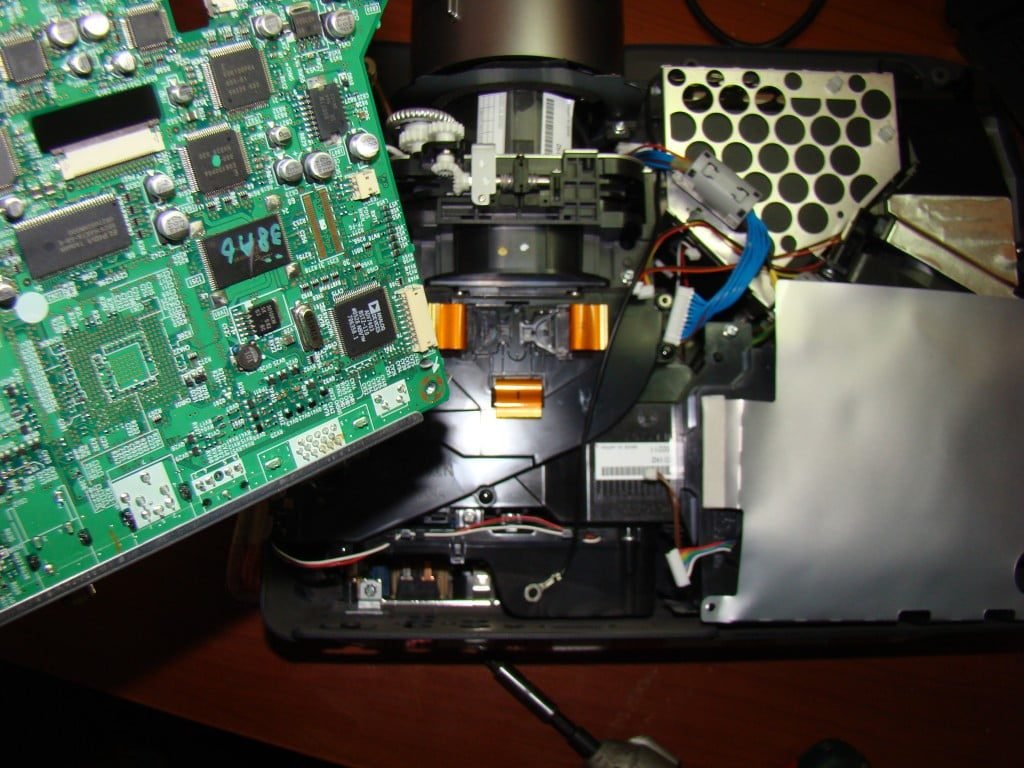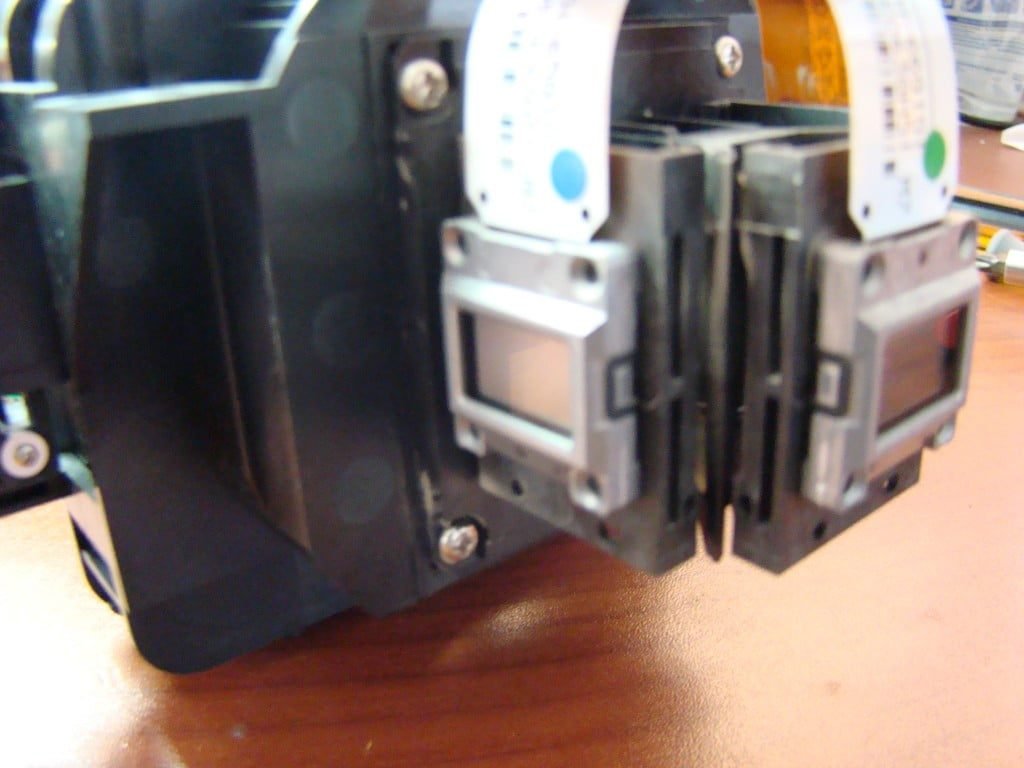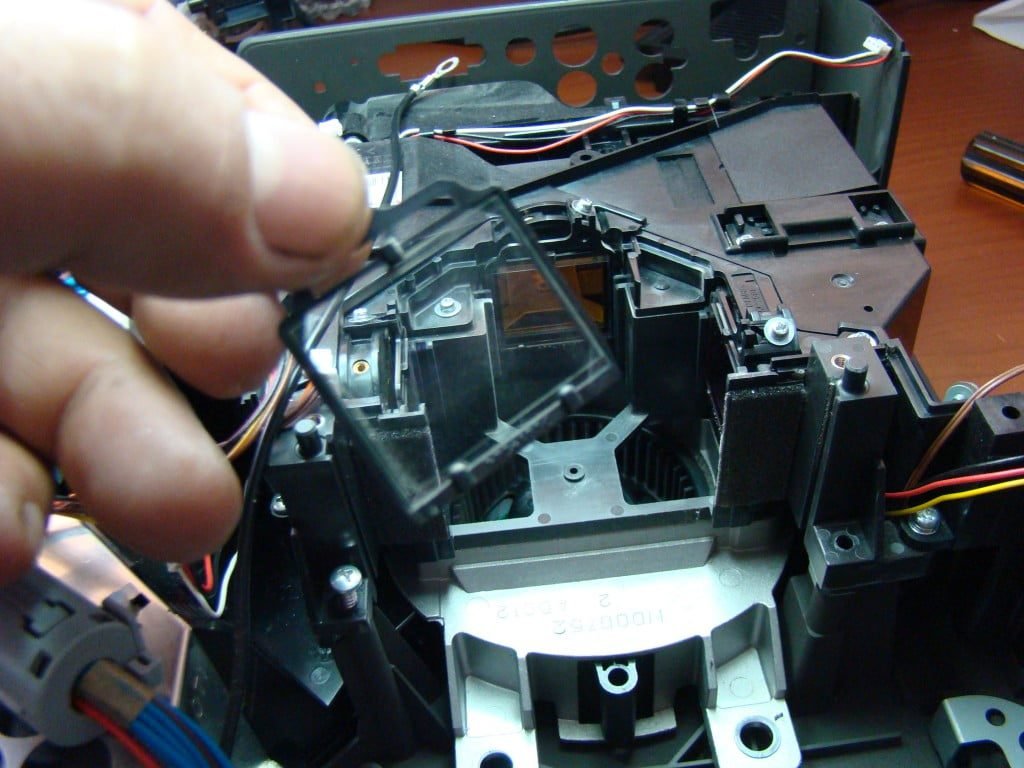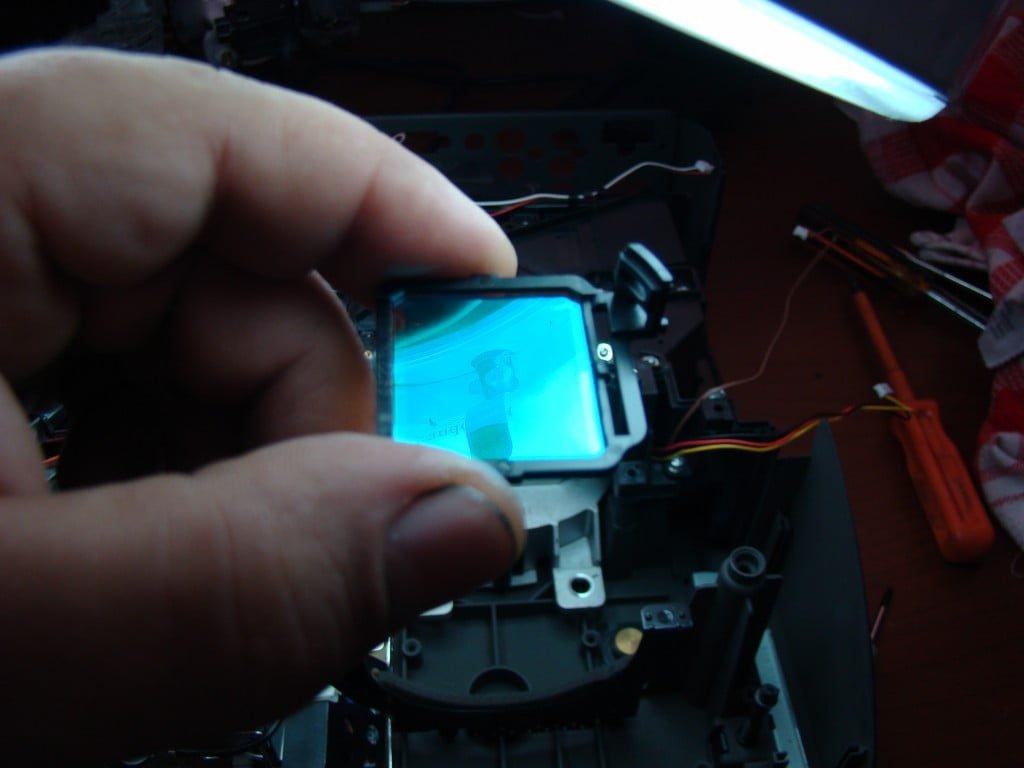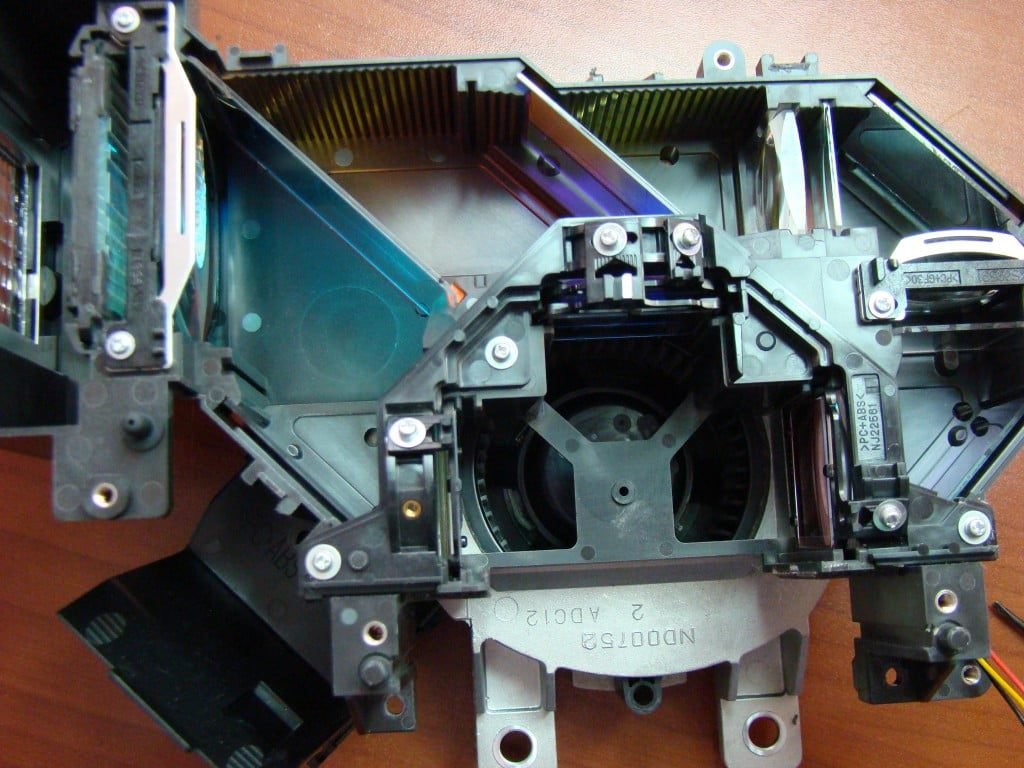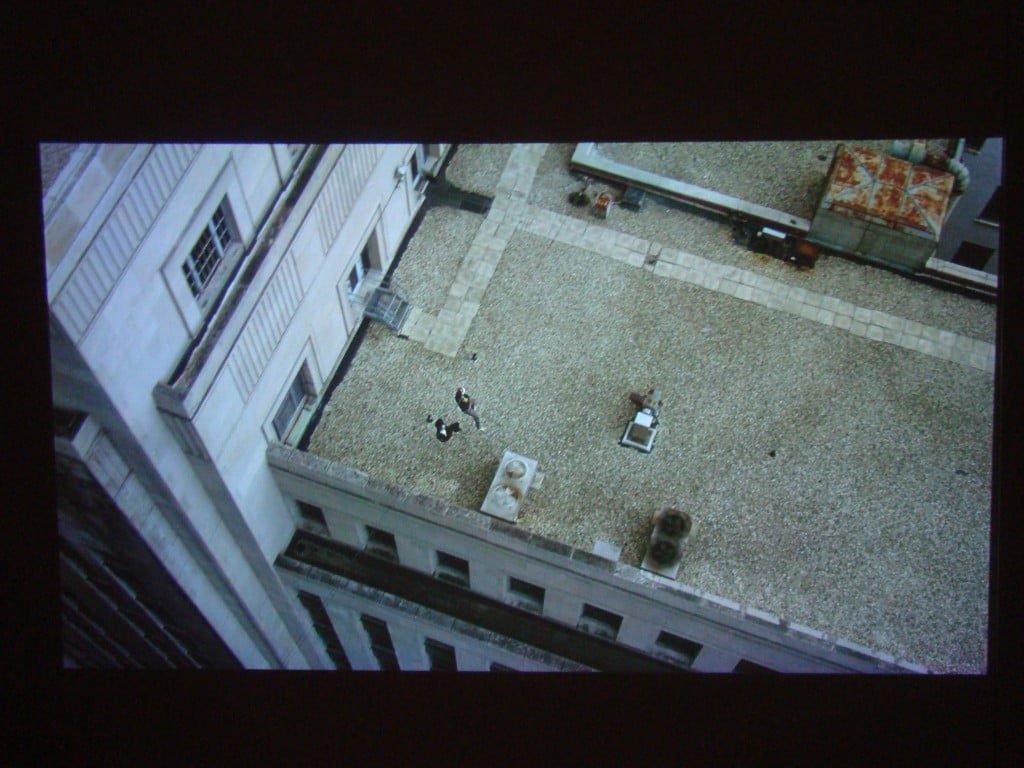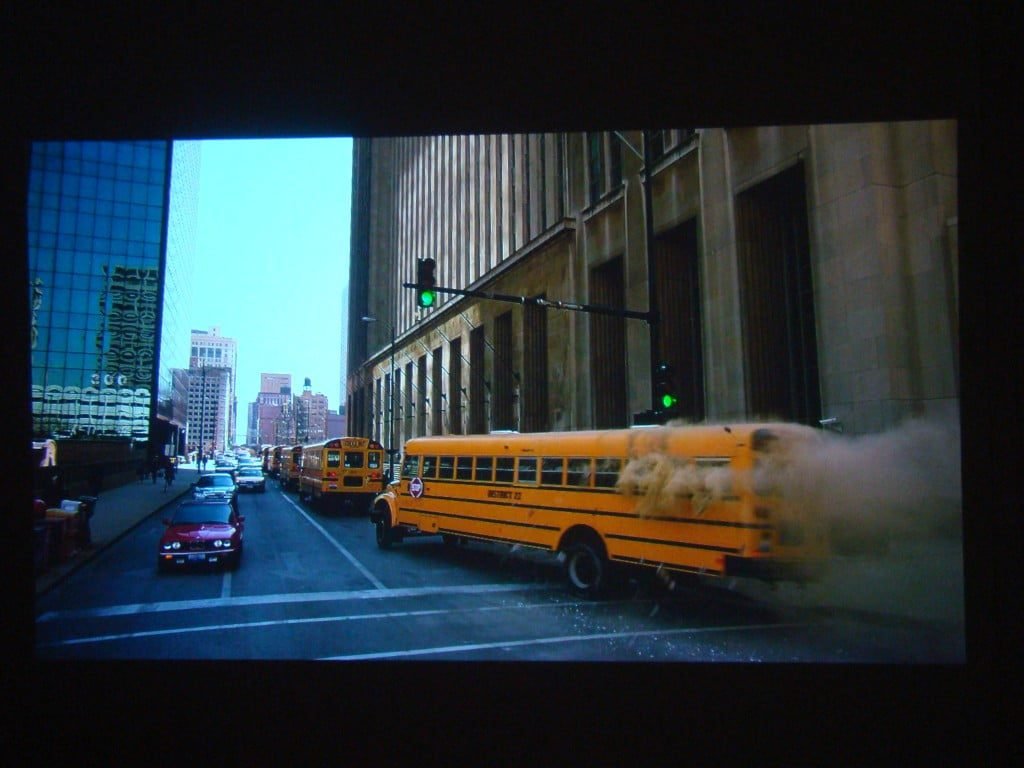A few days ago came to our laboratory a Hitachi TX-200 with over 2000 hours (600 in the second lamp) and with visible markings on the image. Low contrast and brightness and too large blotchy white tab.
Believe us, our curiosity about what you’ll see inside of a projector of this age, is greater than any other modern model.
Before putting the “surgery” linked him to see how he plays. … and we closed through … at least in our eyes, what we saw was the least frustrating and it’s not even entered in the process to the “look” more.
Unfortunately we could not take measurements because our measuring instruments performing debts in the period elsewhere ….
Of course we went straight to the dislodging of the projector because his picture was yelling for cleaning …
We removed the top and started …
Here we see the iris of hitachi located just after the lamp (here to say that we found problems in functioning due to “tired” motors and so we turned off from the menu of the projector)
The lens with the panels were dispatched easily from the optical
At the rear of the lens and in front of Prism had dust ingress to a very large extent
Unfortunately the panels were not detachable and unable to remove the light either to correct a slight deviation to the convergence of the Red panels of a pixel in the lower-right corner …. and we necessarily in their exterior cleaning … because as we’ve said in the past on other articles, any attempt of cleaning with compressed air usually has the opposite effect …
The polarizing filters of panels, is usually the largest source of evil as far as brightness and decline of image display and in particular projector was actually in very bad situation (from issue dust). We tried to take several pictures in order to show you the problem, others are quite difficult to capture the photographic lens the size of “evil”
After we finished with the panels and polarizing filters, it’s time to move on to the main optical and dichrwika in krystala (equally important in their thorough cleaning). Here to say that hitachi is not the easiest projector in the world as regards removing the optic from the chassis.
Here is the share of light and driving in three panels … you will understand how important it is to not alterate sharing rates from ingress of dust and how this affects the final image State..
A projector with several hours under his belt, has afflicted several plastic parts (see high temperatures) and the result is small losses …. Fortunately not important ….
After we finished cleaning up and pieced together the projector, turn was the final test. Here to say that the photos are subjective, because it is impossible to capture in 100% of the image that we see with our eyes, at least in amateur downloads like ours. Role of screen shots is taking an idea and not to shoot safe conclusions (is the general rule).
Almost zero dispersion after cleaning, which is extremely rare for LCD projector technology
As a final conclusion to say that the projector really impressed us at the final result (especially when we did the basic calibration).
LCD is one of the few who have passed through our hands and found while cleaning, little to no alteration in panels and the polarizing of filters.
Also note that the build quality is above average, then competition (Epson TW700-Sanyo Z4-Panasonic 900).



